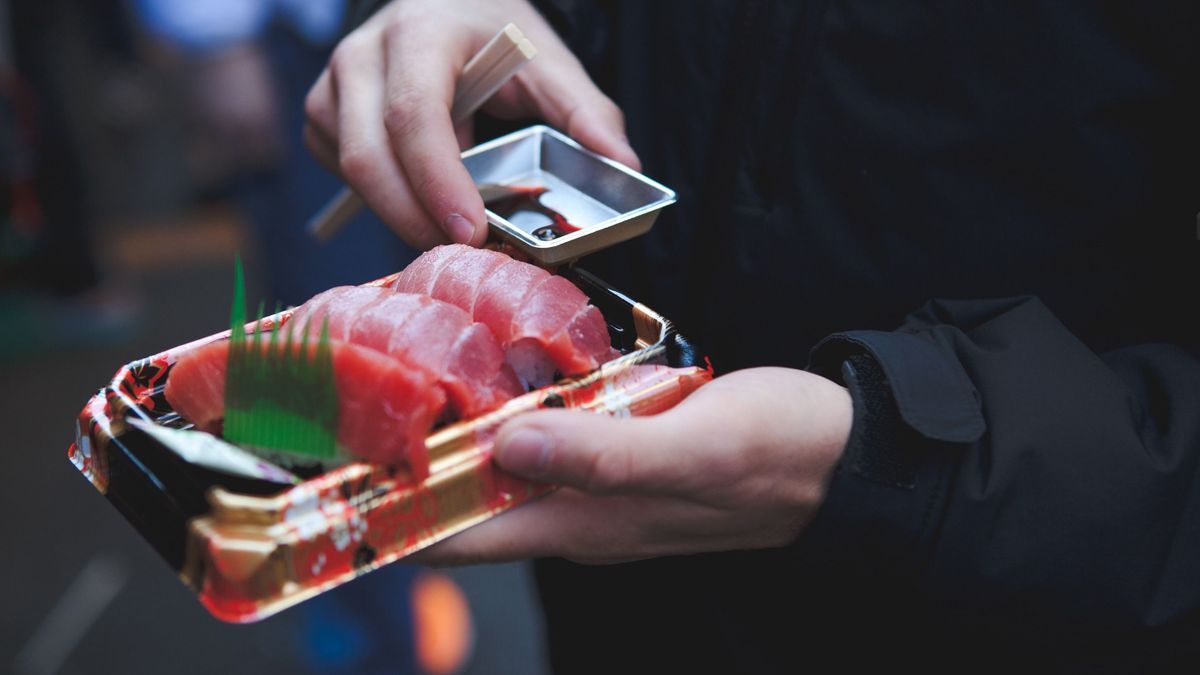
So that would be the end of B12 or A10 menus on Friday evenings… The famous little bites of vinegared rice and raw fish straight from Japan are no longer popular with the French, who have discovered other specialties Asian cuisine with a more accessible budget.
Sushi is no longer a choice at mealtimes, according to the latest Speak Snacking study, presented at the Sandwich & Snack Show trade fair organized in Paris. This focused on the favorite recipes of the French in 2023 in terms of fast food. And if this ranking unsurprisingly crowns pizza (49%) and burgers (34%), it above all marks a turning point in the success of sushi, which no longer appears in the top 10 favorite snacks. For a long time, these typically Japanese little rice bites were the third favorite choice. Already last year their popularity began to decline, only appearing in seventh position.
The reason is twofold. It is first of all financial. It must indeed be recognized that the budget to treat yourself to a Japanese menu is substantial. According to the analysis firm Gira Conseil, sushi is the most expensive fast food product, with an average price of 21 euros per person for delivery. A price attributable in part to the cost of a kilo of fresh salmon which soared between 2022 and 2023, displaying almost 20 euros at the Rungis international market when it was less than 10 euros per kilo in 2021. By comparison, the French agree to spend on average up to 13.25 euros to eat a pizza, 10.50 euros for a burger, or even 9.20 euros for a kebab, which has become the third favorite snack.
But price is not the only explanation. Because sushi is no longer the only Asian recipe when ordering. The French have discovered a whole host of culinary specialties, from Korean bibimbap or fried chicken to Thai pad thai, Vietnamese bo bun and even Japanese ramen. So many recipes have diluted the gourmet craze for sushi, not to mention the success of the Hawaiian poke bowl which offers another way of consuming raw fish.
The small bites of Japanese raw fish that Europeans adapted to their sauce by preparing them with salmon and sometimes engulfing them in sweet soy sauce (a heresy for the Japanese!) nevertheless fueled a culinary fashion that made people salivate a whole generation at the end of the 90s. According to an article in Le Monde published in 2008, the recipe was nevertheless imported by the Chinese and Koreans, when restaurateurs decided to transform their food offering due to the collapse of their sales. According to the Gira Conseil firm, there were 1,580 so-called Japanese restaurants in Europe in 2010. The analysis company then calculated that the growth of this restaurant was of the order of 20 to 25% per year since 2005. In 2013, 22% of French people ate sushi at least once a month. A food trend mainly maintained by young consumers – 20-34 year olds were those who devoured it the most, and living in Paris or its region.
